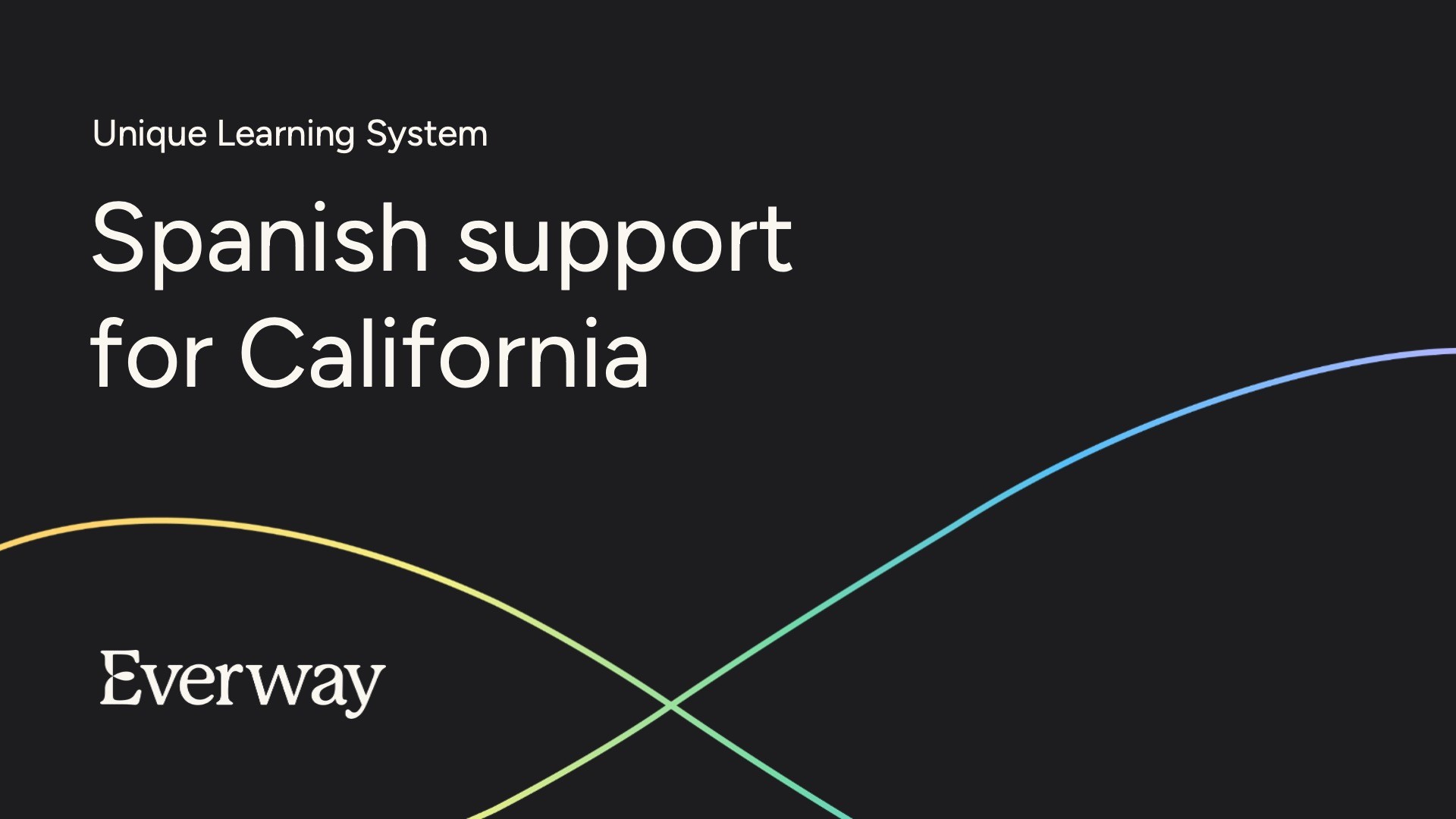Educational researchers and leaders have continued to discuss what makes good teaching in the years following the Panel’s investigation. As policy has shifted with changes in administrations, so have grant funding, areas of research, curriculum, and resources. Yet the data remains clear: The most recent National Association of Educational Progress (NAEP) scores show that just 32% of American students are at or above the “proficient” level in math in fourth grade. And only 22% are proficient in math by twelfth grade. These percentages are even lower for students with disabilities.
So, what actually works?
How do children learn math? How might teachers teach math more effectively? What are the evidence-based teaching practices for students with learning disabilities?
A Proven Way to Teach Math
One of the most powerful tools for teaching math to students with learning disabilities is the use of explicit, systematic instruction. Explicit instruction usually has these components:
- Clear modeling
- Think-alouds
- Multiple examples
- Immediate corrective feedback
Regularly teaching through explicit instruction has been shown to improve the performance of students with learning disabilities and learning difficulties in the areas of computation, word problems, and transferring known skills to novel situations—high-need areas for many with learning disabilities.
When introducing a new concept, an effective plan is to follow the sequence of modeling, think-alouds, multiple examples, and immediate feedback. Here’s what this looks like:

Clear Modeling
Modeling is when the well-prepared teacher presents a new procedure or concept to a group of students by showing and explaining. Initially, students observe rather than interact. They will have multiple opportunities to engage, ask questions, and practice later in the lesson.
Depending on the needs of the students and the nature of the objective, the teacher may use different tools to model the problem. Whiteboards, SMART Boards, document cameras and worksheets, chart paper with colored markers, and manipulatives are all common materials used for modeling. Modeling is not reserved for the large-group setting. Many special education teachers use modeling in small groups to introduce a new concept.
Teachers should be thoughtful in their selection of which problems to model initially. If you’re not already working with a differentiated and scaffolded curriculum, choose numbers and word problem stories that make sense for your students. For example, if you are teaching a lesson on subtraction, pay attention to the numbers you are choosing. How well do your students understand place value? Are they ready for borrowing across zeros? How will you support this computation with a visual? What math vocabulary words will you incorporate as you verbalize your process and where can your students reference those words and visuals?
Modeling should show students exactly what to do and why. Implementing this teaching strategy decreases student error and is an effective tool for students with math learning difficulties.

Think-Alouds
The think-aloud is part of the modeling process. As the teacher moves through each step of the problem, they are verbalizing their expert thinking.
Ok, I’ve made sure my subtraction problem is set up correctly—the ones digits are lined up and the tens digits are lined up. I even drew my line down the middle to know it’s right. I have to do this first so I don’t accidentally subtract the number in the ones place from the number in the tens place!
New teachers may benefit from drafting the few sentences they plan to think aloud or practicing the think-aloud prior to delivering the lesson. This is especially helpful when preparing to teach a challenging objective. The lesson-planning process should include anticipating common misconceptions and student questions. Then, when you are live with your students, you are ready to proactively address common mistakes through the think-aloud process.
Use clear and concise language. For students with learning disabilities, it is important to speak slowly enough for students to have time to process your words. Avoid figurative language as you speak because many students with disabilities understand language on a literal level. Use visuals to accompany your modeling whenever possible. And finally, remember that the think-aloud is not a lecture. It is a quick snapshot of your thinking presented to your students at a cognitive level that makes sense for their abilities.

Multiple Examples
Most students are not ready to practice an objective on their own after seeing just one example. Plan to present about three examples to your students. Generally, the examples you choose should cover the different types of problems your students will encounter during their independent practice.
A subtraction lesson may have three examples:
1. Subtracting with two digits
(no borrowing)
54 − 32 =
2. Subtracting with two digits
(borrowing from tens place)
62 − 39 =
3. How to check your answer in a subtraction problem
Subtraction Problem
75 − 41 = 34
Check
41 + 34 = 75
After the teacher has modeled the example problems, students will then begin to practice the objective with guidance from the teacher and/or classmates. Some respond well to seeing one example and then practicing that specific skill before seeing a second example. When a teacher breaks up the objective into smaller pieces and follows a model-practice, model-practice sequence, this is called chunking.

Immediate Corrective Feedback
The fourth component of explicit instruction is providing immediate corrective feedback. We want to catch our students’ errors while they are still practicing with us in the classroom. This way they don’t learn the skill incorrectly and then continue to practice it incorrectly for homework and on other assignments. Immediate feedback may be given when a teacher circulates throughout the room and checks individual students’ papers. It is during this practice time that they are encouraged to ask questions and work together. Cooperative learning strategies such as think-pair-share are a great tool to use during this part of the lesson.
Individual whiteboards offer a highly engaging way for teachers to provide immediate feedback. They also make it easy for them to get a sense for how well their class is grasping the new content. And students love them! To use individual whiteboards, first present a practice problem on the board. The students will have a predetermined amount of time (such as two minutes) to work the problem on their whiteboard. When you call, “Time!” they flip their whiteboards from their desks to face the teacher. One glance around the room will offer you a good gauge of how well the students are internalizing the objective.
In an inclusion classroom, a special education teacher may use this real-time formative assessment data to pull a small group of students who are struggling with the same misconception for re-teaching and re-modeling. For students with disabilities that affect fine motor skills or visual-perception skills, for example, the strategy can be adapted—they may be allowed to use calculators or peers for support, or they may be given a whiteboard with the problem pre-filled to eliminate the need to copy from the board. Adapt as needed to meet your students where they are.
Summary
Explicit, systematic instruction is not the only way to teach math effectively, but it should be used regularly. Providing clear modeling, think-alouds, multiple examples, and immediate corrective feedback is especially effective for helping students with learning disabilities meet standards and reach their potential.



